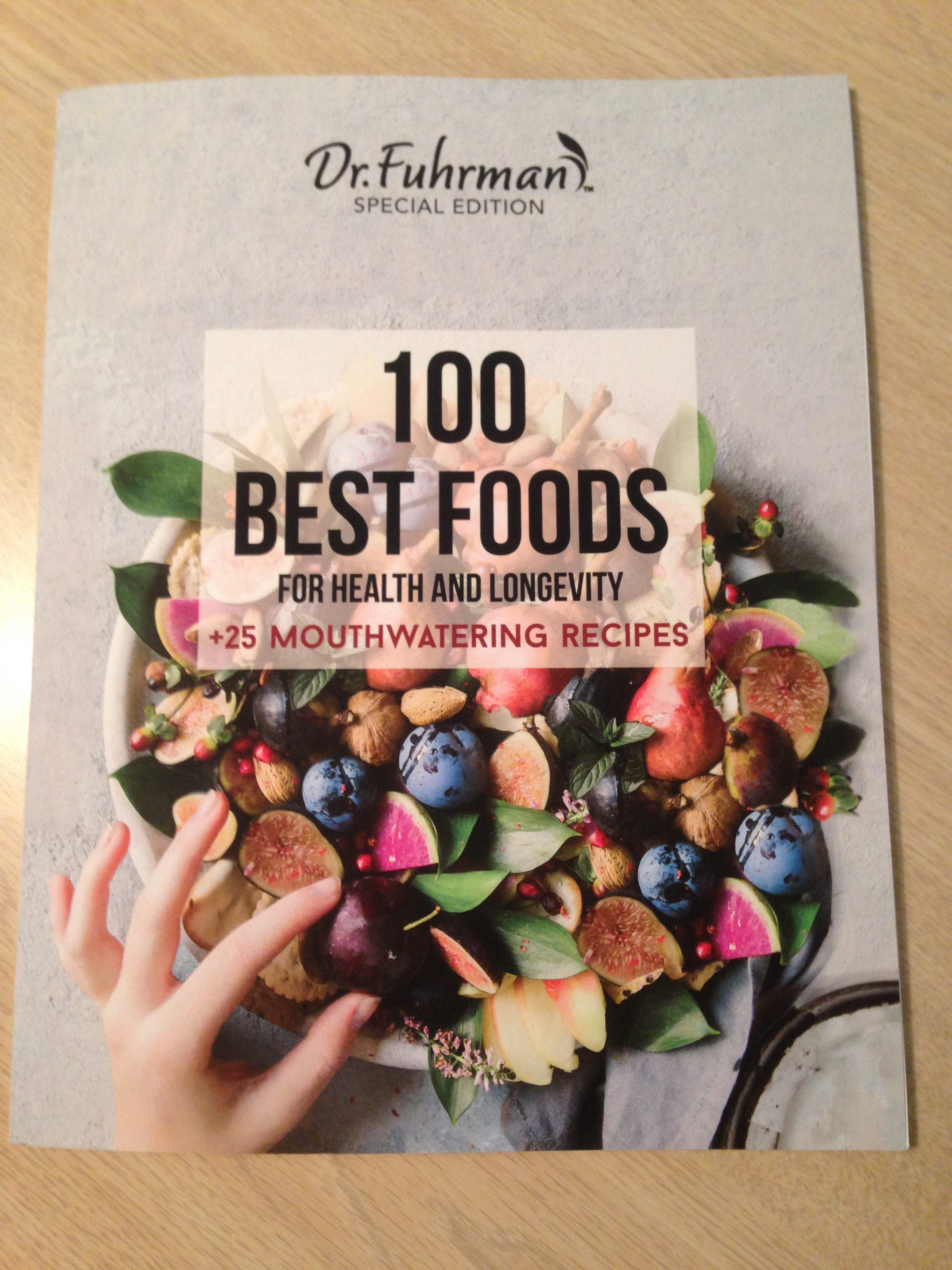
THE BEST $15 YOU’LL SPEND THIS MONTH
If you read my blog, you know I’m an advocate of a whole food, plant-based eating pattern (WFPB). I believe WFPB gives over-50 adults and seniors the best chance to age gracefully, overcome unfavorable genetics and counteract the dietary and lifestyle mistakes we may have made in the past.
If you’ve read my posts on WFPB eating (see here, here & here), you also know I’m a big fan of Dr. Joel Fuhrman. Along with Dr. Michael Greger, Dr. Fuhrman is, in fact, a super star of WFPB nutrition. Drs. Fuhrman & Greger are superb WFPB educators who help make it easier for us to make the right food choices – and that’s what this post is about.
WHOLE FOOD, PLANT-BASED EATING & DEGENERATIVE DISEASE
Regular consumption of the right kind of plant foods changes our internal environment to largely eliminate the conditions (like chronic inflammation for one example) which cause the development of most of our modern degenerative lifestyle diseases – high blood pressure, stroke, heart attacks, cancers, obesity, diabetes, metabolic syndrome and some forms of dementia. In fact, it seems likely a diligent and regular WFPB diet will cause regression of many degenerative lifestyle diseases.
NUTRIENT DENSITY
Dr. Fuhrman’s term for WFPB eating is a “Nutritarian Diet”, which helps to underscore the key concept of WFPB nutrition – nutrient density – the fact that plants, on a calorie for calorie basis, are the most nutritious foods on the planet. To help illustrate nutrient density, Dr. Fuhrman developed the ANDI food scoring system, which ranks foods by a numerical nutrient density score from 1 to 1000.
DR. FUHRMAN’S 100 BEST FOODS FOR HEALTH & LONGEVITY
The ANDI food ranking lists can be dry reading, but with the recent publication of the magazine-sized 100 Best Foods for Health and Longevity, Dr. Fuhrman changes all that. He uses his ANDI scores to detail the foods we should eat to ensure the best possible WFPB diet. 100 Best Foods makes it easy and enjoyable to learn which foods are the most nutritious and healthful – and with great photos and a little bit of the “why” for each food. From almonds to zucchini, in about an hour’s reading time, and for less than you’ll probably spend on coffee this month, you’ll have the basics covered for a well-planned plant-based diet.
LIFE-PROTECTIVE TIPS, USEFUL FACTS, INTERESTING THINGS TO KNOW
100 Best Foods offers lots of helpful information – from life-protective tips, to useful facts, to just plain interesting things to know – and all that information is backed up with scientific references for each food.
Some examples of important life-protective tips include: a) mustard/turnip greens, kale, watercress and arugula “are the most powerful, disease-protecting, lifespan enhancing foods on the planet”; b) you should never eat raw mushrooms because they contain a carcinogenic substance that is inactivated with cooking; c) there are two types of cinnamon and one has the potential to cause liver damage; d) always buy organic strawberries because conventional strawberries are one of the most pesticide-contaminated fruits.
Some examples of useful facts: a) adding milk (dairy or otherwise) to green tea may reduce its health-enhancing effects; b) lentils have a “second meal effect” – when you consume lentils as part of a meal it reduces blood sugar and food intake “not just within the same meal, but at the next meal” as well; c) intact whole grains are metabolized much more favorably and have “many nutritional advantages over whole-grain flour products or refined grains”; d) plums have “potent bone-building effects that help prevent osteoporosis”; e) the carotenoids in red peppers and the limonene in kumquats may reduce sun-induced skin damage and may help prevent skin cancer.
Some examples of interesting things to know: a) cucumbers have the highest water content of any vegetable; b) dill has anti-fungal and anti-bacterial effects; c) pistachios have been documented to improve erectile function (for real! – see page 96); d) tart cherries and watermelon may reduce muscle soreness after exercise.
RECIPES
An exciting bonus of 100 Best Foods for Health and Longevity are the 25 recipes interspersed throughout the book. I can’t wait to try Lemon Basil Vinaigrette (pg. 21); Chick Pea Collard Wraps (pg.43) perhaps with Tofu Cashew Remoulade (pg. 37) as a dipping sauce; Creamy Mushroom Soup (pg.79); Watercress Pesto Pitas (pg.124); and Chocolate Nice Cream (pg. 42) or Fudgy Fig Bites (pg.55) for desert.
FREE MEMBERSHIP
100 Best Foods for Health and Longevity is available on Dr. Fuhrman’s website here. In my previous WFPB posts, I have written about the features and the resources available on Dr. Fuhrman’s website, Dr. Fuhrman.com, which is a tremendous resource for WFPB skill development and knowledge. My purchase of 100 Best Foods for Health and Longevity came with a free 3-month membership to DrFuhrman.com, which is an important value-added bonus for your $15 purchase; hopefully they will continue to offer it for your purchase as well.
G-BOMBS
If you buy 100 Best Foods, read it twice – I did – it doesn’t take very long. If you don’t buy it, at least remember the simple acronym “G-BOMBS” that Dr. Fuhrman developed to help us remember which foods to eat every day for optimum health. “G-BOMBS” stands for: Greens, Beans, Onions, Mushrooms, Berries, and Seeds. And perhaps try your best to minimize chips, crackers, bread, bagels, tortillas, potatoes, white rice and juices – although plant-based, you won’t find them in the book – and your body will thank you.



